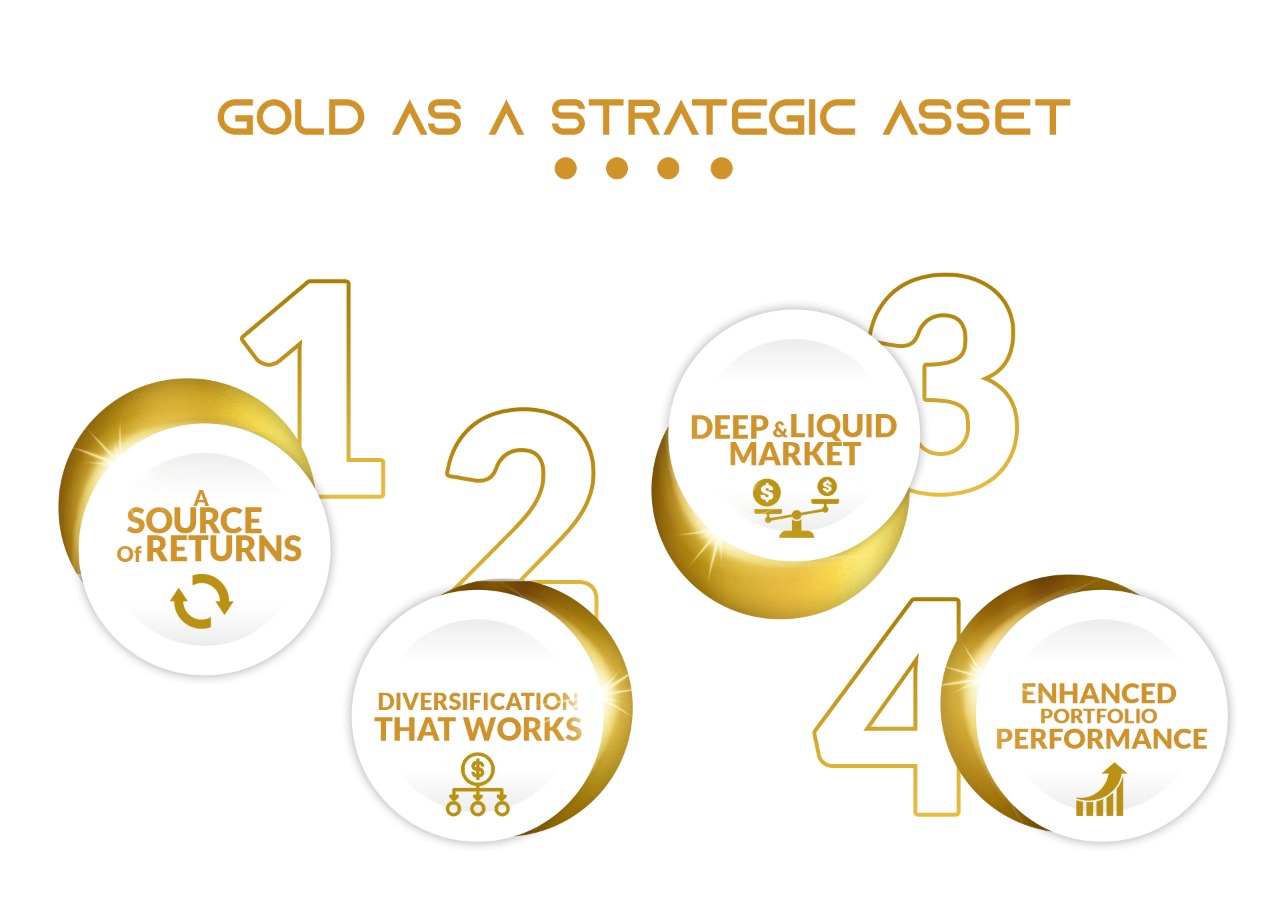Gold As a Strategic Asset
- Home
- Information Center by DahabMasr
- Gold As a Strategic Asset

Gold As a Strategic Asset
Jan 11, 2022
By
omar.hamdy
0 comment(s)
Gold as a strategic asset
Gold benefits from diverse sources of demand: as an investment, a reserve asset, jewelry, and a technology component. It is highly liquid, no one’s liability, carries no credit risk, and is scarce, historically preserving its value over time.
Gold does not directly conform to the majority of the most common valuation methodologies used for equities or bonds. Without a coupon or dividend, typical models based on discounted cash flows, expected earnings, or book-to-value ratios, struggle to provide an appropriate assessment for gold’s underlying value. This presented an opportunity for the World Gold Council to develop a framework to better understand gold valuation.
1. Returns
2. Diversification
3. Liquidity
4. Portfolio performance
2020 posed unprecedented challenges to investors as the first global pandemic in a century ravaged the world economically and socially.
A source of returns
Investors have long considered gold a beneficial asset during periods of uncertainty. Historically, it has generated long-term positive returns in both good and bad economic times. Looking back almost half a century, the price of gold in US dollars has increased by an average of nearly 11% per year since 19719 when the gold standard collapsed.10 Over this period, gold’s long-term return is comparable to equities and higher than bonds.11 Gold has also outperformed many other major asset classes over the past five, 10 and 20 years
Beating inflation, combating deflation.
Gold has long been considered a hedge against inflation and the data confirms this. The average annual return of 11% in US dollars over the past 50 years, has outpaced the US and world consumer price indices (CPI)
Diversification that works
The gold market is large, global and highly liquid.
We estimate that physical gold holdings by investors and central banks are worth approximately US$4.8tn, with an additional US$1.1tn in open interest through derivatives traded on exchanges or the over-the-counter (OTC) market
The gold market is also more liquid than several major financial markets, including US T-bills, euro/yen and the Dow Jones Industrial Average, while trading volumes are similar to those of the S&P 500
Gold’s trading volumes averaged approximately US$180bn per day in 2020. During that period, OTC spot and derivatives contracts accounted for US$110bn and gold futures traded US$69bn per day across various global exchanges. Gold-backed ETFs (gold ETFs) offer an additional source of liquidity, with the largest US-listed funds trading an average of US$3bn per day
The scale and depth of the market mean that it can comfortably accommodate large, buy-and-hold institutional investors. In stark contrast to many financial markets, gold’s liquidity does not dry up, even at times of financial stress, making it a much less volatile asset
Enhanced portfolio performance
Long-term returns, liquidity and effective diversification all benefit overall portfolio performance. In combination, they suggest that the addition of gold can materially enhance a portfolio’s risk-adjusted returns.
Our analysis of investment performance over the past five, 10- and 20-years underlines gold’s positive impact on an institutional portfolio. It shows that the US pension fund average portfolio would have achieved higher risk-adjusted returns and lower drawdowns if 2.5%, 5% or 10% were allocated to gold. This positive impact has been particularly marked since the GFC.



 EN
EN